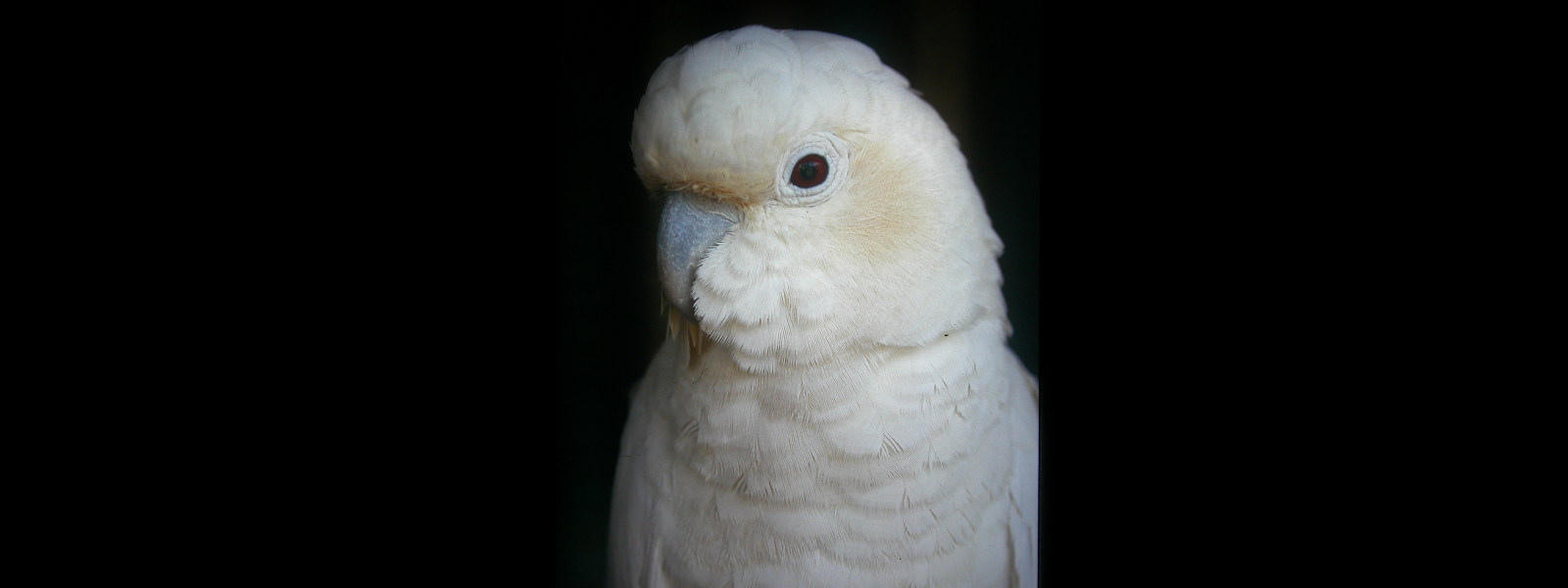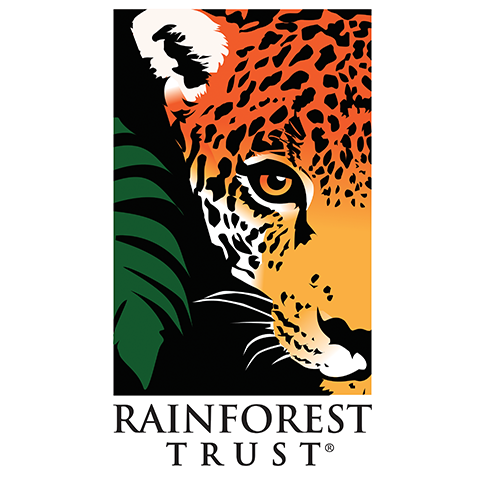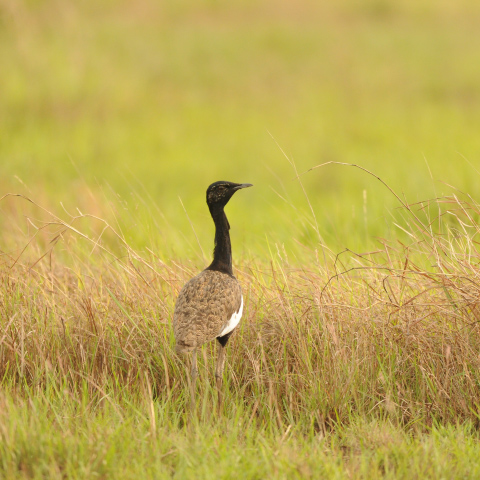Conservation Actions
Conservation Actions UnderwayCITES Appendix I (1992). It is known from five protected areas: Rasa Island Wildlife Sanctuary, Puerto Princesa Subterranean River National Park, Omoi and Manambaling Cockatoo Reserves in Dumaran, Culasian Managed Resource Protected Area in Rizal and Samar Island Natural Park. Since 1998 an intensive species conservation programme, the Philippine Cockatoo Conservation Program (PCCP) has been implemented by the Katala Foundation. In 2005, the Katala Foundation started to plan and build the Katala Institute for Ecology and Biodiversity Conservation, designed as a centre for environmental education and research, as well as possibly serving a role as a facility for the captive breeding of the species. Three protected areas have been specifically created for the species in Palawan on Rasa Island, Dumaran and Rizal. Conservation efforts on Rasa Island recovered a small population from 23 individuals to over 200 by July 2008 (Widmann and Widmann 2008) and 260-340 by the end of 2015 (P. Widmann in litt. 2016). Poachers have been trained as wildlife wardens and were provided with alternative sources of income. This turned out to be the single most effective activity to prevent poaching and was repeated in three other project sites.
Awareness campaigns have been conducted on Mindanao, Palawan and Polillo. Trilingual conservation posters have been distributed nationwide. The Katala Pride Campaign launched on Dumaran Island has focused on raising awareness among students and farmers (Anon. 2005). In 1992, an international captive-breeding programme was initiated, with 39 birds kept under the European Studbook in 2007 (P. Widmann in litt. 2008). In 2005, drought caused the starvation of 15 chicks, so 10 chicks were hand-reared for an experimental translocation (Widmann and Widmann 2005). An extreme drought in 2010, possibly worse than that in 2005, resulted in only 15 of 25 nests on Rasa producing a total of 24 young, of which only five survived until late April and were rescued for supplementary feeding. Supplemental food and water were provided for adult birds on Rasa to mitigate the effects of the drought (Anon. 2010), and this was again conducted during drought in 2016, though nestlings on Damaran were rescued to prevent starvation (P. Widmann in litt. 2016).
Currently, sites are assessed and tested for their suitability for translocation. A first attempt on a resort island in northern Palawan indicated that rescued hand-raised birds can adapt well to natural conditions (foraging, predator avoidance), but was terminated owing to problems caused by tameness. Conservation efforts started in 2010 at a new project site on Pandanan Island to the south of Palawan (Anon. 2010), where surveys confirmed the presence of a viable population (Widmann and Lacerna-Widmann 2009). Meetings, focus groups and other events have been held to engage local communities, and alternative income sources are being promoted to reduce trapping pressure (Anon. 2010). Experimental habitat restoration has been initiated at Dumaran and one mainland site in Palawan. A project to identify suitable reintroduction sites and to create necessary conditions for reintroduction (e.g. legal, social acceptance, site preparation) was initiated in 2012 (P. Widmann in litt. 2012). Suitable rescued and confiscated birds from Palawan are currently released on Dumaran to supplement the existing and possibly overaged population (P. Widmann in litt. 2016); and Siargao Island, south-eastern Philippines is being made suitable for a reintroduction attempt (Anon. 2014). A former poacher has been employed to patrol the potential release site and the local village cooperative have been employed to plant seedlings of cockatoo food plants. A subpopulation of the species is found in the Iwahig Prison and Penal Farm, Central Palawan and a nest protection scheme was recently initiated (Widmann and Widmann 2014b, 2016, P. Widmann in litt. 2016).
Conservation Actions Proposed
Continue to conduct surveys on all range islands to collect more information on the basic biology of the species, detect formerly overlooked populations and potential reintroduction sites (P. Widmann in litt. 2016). Monitor population trends. Monitor rates of habitat loss and degradation. Quantify levels of trapping, persecution and trade. Designate further protected areas (e.g. Tawitawi and localities on or near to Palawan). Support the proposed expansion of St Paul's Subterranean National Park. Prevent further mangrove destruction. Continue to promote economically viable alternatives to cockatoo-trapping. Continue education programmes and captive breeding programmes. Establish staffed posts at airports and ferry terminals. Continue to conduct translocations into suitable (well-protected, intact) lowland forest or mangrove habitats. Continue to develop habitat restoration techniques for the species and implement these techniques (P. Widmann in litt. 2016).
Location Information
This species is endemic to the Philippines. In 1950, it was common throughout but a rapid decline has left a population of c. 650-1,120 birds (P. Widmann in litt. 2016). Of these, there are 580-850 on Palawan and its satellite islands, "several hundred" or 50-150 in Sulu (I. Sarenas pers. comm. per P. Widmann in litt. 2016), it is possibly extinct on Mindanao, and there are fewer than 20 individuals recorded in the Polillo group of islands, Bohol and Samar (P. Widmann in litt. 2016). Subpopulations away from Palawan and the Sulus are mainly tiny and have few long-term prospects. Conservation efforts are underway at four sites; including on Rasa Island near Narra, Palawan, where the population increased from 23 in 1998 to over 200 in 2008 and 260-340 individuals by end of 2015 (Widmann and Widmann 2008, Anon. 2010, P. Widmann in litt. 2016) and a record breeding season in 2011 saw 75 young banded. Individuals have reportedly 'self-introduced' from Rasa Island to the mainland indicating that Rasa may be reaching carrying capacity (Widmann and Widmann 2014a). Since the start of a nest protection scheme on Pandanan in 2008 the cockatoo population increased from c. 40 birds to 110 (P. Widmann in litt. 2012) and at least 230 by the end of 2015 (P. Widmann in litt. 2016). The population on Dumaran Island remains stable on a low level of between 26 and 37 birds (P. Widmann in litt. 2016). Some sites do still show a decline though, such as Iwahig Prison and Penal Farm on Palawan (P. Widmann in litt. 2016), and while the overall trend on Palawan is positive, the species is becoming concentrated in locations with active management (P. Widmann in litt. 2016).Geographic Range
Extant
Philippines
Population Information
The population is estimated to number 650-1,120 individuals, roughly equivalent to 430-750 mature individuals (P. Widmann in litt. 2016).Threats
On Palawan, Polillo and Samar, trapping was particularly serious, and the high price fetched per bird (c.US$160 in Manila in 1997 and US$300 in 2006) means that chicks were taken from virtually every accessible nest, however this trade has now virtually ceased due to the very low numbers of birds in these localities (P. Widmann in litt. 2016). High numbers were (legally) traded internationally in the 1980s (e.g. 422 in 1983). Poaching of nestlings and snares possibly intended for roosting cockatoos have also been noted during initial conservation work on Pandanan Island, but this threat ceased due to the implementation of an intensive wildlife warden and nest protection scheme (P. Widmann in litt. 2016). During nest monitoring on Pandanan, illegal tree cutting was also documented (Anon. 2010). Lowland deforestation and mangrove destruction have been extensive throughout its range, and have contributed significantly to its decline. It is also persecuted as a crop-pest and hunted for food. Typhoons are a threat, at least in already declining populations. Very dry breeding seasons may lead to partial or complete breeding failure, e.g. breeding success on Pandanan and Rasa in 2016 was low and catastrophic on Dumaran (where all surviving nestlings were rescued) due to effects in El Niño (P. Widmann in litt. 2016). The release of captive birds may introduce disease into the wild population. Introduced predators represent a threat at many potential release sites. Recent attempts to establish a large-scale biofuel plantation in cockatoo habitats on Dumaran, and a coal-fired power plant in the immediate vicinity of Rasa Island (which held c.280 individuals in 2012), were only prevented by major advocacy campaigns and remain potential threats (P. Widmann in litt. 2013, Anon. 2013). Recreational activities may also play an increased role in the future, as a roost site was abandoned shortly after its location was publicised on social media (P. Widmann in litt. 2016).Partners
IUCN Red List Account Link
Please click here to see the species' IUCN Red List Account page.Photo Credits
Peter Widmann (category and featured image)










